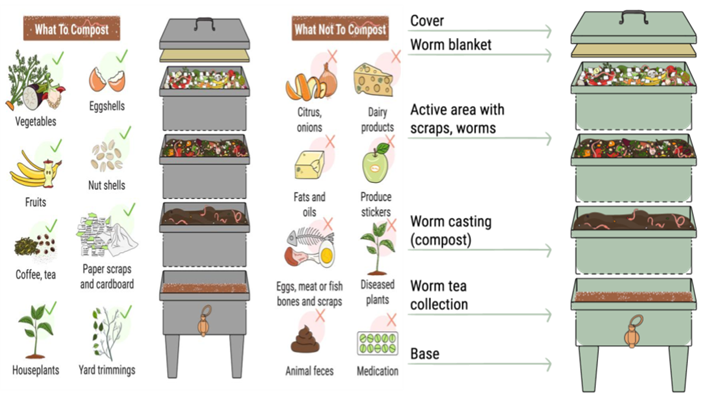
PUMPA - SMART LEARNING
எங்கள் ஆசிரியர்களுடன் 1-ஆன்-1 ஆலோசனை நேரத்தைப் பெறுங்கள். டாப்பர் ஆவதற்கு நாங்கள் பயிற்சி அளிப்போம்
Book Free DemoIn this method, the earthworms are reared in a container or bin. This container is half-filled with beeding materials such as leaves, paddy husk, shredded cardboard, chopped straw, sawdust and manure.
A small quantity of soil and sand is added to this so that the necessary girt for the worms is provided. Water is added to this so that the bedding material is moistened and the free movement of the earthworm is enabled. Then the worms are placed gently and are spread evenly on the bedding.
The organic wastes such as kitchen wastes, vegetable and fruit wastes that are added are consumed as food by the earthworms. Then the bin is covered by using coconut leaves or gunny bags to prevent the moisture from escaping, provide darkness and to conserve water.
All the wastes inside the bin completely transform into nutrient-rich materials after a period of \(60\)days. The nutrient-rich materials are the excretions of earthworms and are known as worm castings which are harvested and used as organic manure.

Vermicomposting bin method
The colour of vemicompost is similar in colour and appearance to that of the farmyard manure, which is dark brown in colour.
- Vermicompost is a rich source of nutrients essential for plant growth as it increases the fertility of the soil.
- It increases the water-holding capacity of the soil and prevents soil erosion.
- Various substances such as vitamins, enzymes and growth regulator substances for increasing growth, vigour and yield are present.
- Unlike other artificial manures, vermicompost is free from pathogens and toxic elements.
- Vermicompost is rich in various beneficial microflora.